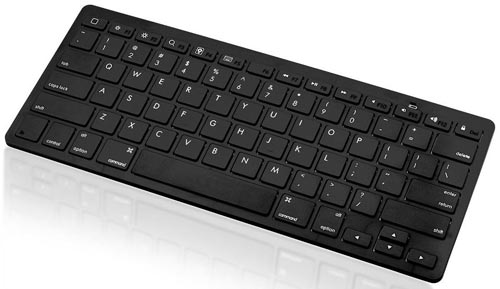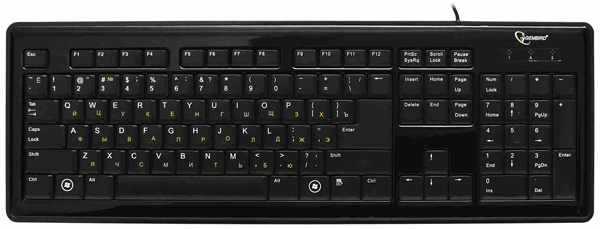Some people associate the concept of “keyboard” solely with an input device for personal computers or laptops. In fact, the meaning of this term is much broader. Manufacturers of electronic equipment, computers and intelligent systems have always sought to make their products universal, suitable for as many potential users as possible. As a result, it became necessary to create intermediate devices with which the computer is given commands.

Now it is impossible to imagine any technique without a keyboard. Household appliances, car devices and industrial equipment - the whole variety of existing electronic devices from the most complex units to the usual remote controls of home electronics are equipped with button control systems of one type or another.
Content
What keyboards are there?
The main factor by which different types of keyboards are distinguished is the principle of their action. Two main categories can be distinguished:
- mechanical, in which control is carried out by physical contact closure;
- sensory, in the work of which various electrical properties of materials and semiconductors and their properties are used.
This distinction is rather arbitrary, but for a better understanding it can be classified within these two accepted groups.
Mechanical keyboards
In the general case, the principle of operation of mechanical keyboards is similar to the operation of a conventional electric button. When a moving surface is pressed, two contacts are closed, through which a logical signal is transmitted to the processing nodes of the electronic device. Keys usually have spring parts that return the button to its original state after stopping pressing.
A striking example of such control systems is the usual computer input devices for personal computers or laptops.

Main advantages:
- Extreme durability (up to 50 million clicks and more);
- convenience of work due to high tactility;
- ease of maintenance.
The main disadvantages:
- high price due to the complexity of production;
- large dimensions that do not allow minimizing the size of the overall work surface;
- lack of tightness, which leads to a possible clogging of the internal areas.
Membrane Keyboards
To reduce the working surface area of the keyboard allow membrane keyboards. These devices for interacting with electronic devices are similar in principle to simple mechanical keyboards. The only thing is that they lack a button as such, the functions of which are performed by elastic membranes. Pressing the membrane causes the current-conducting contact mounted in one of its layers to be pressed to the stationary contact located directly on the circuit board of the electronic device.
As an example of equipment that uses membrane-type keyboards, we can mention remote controls for television and audio equipment, programming panels for other household appliances - microwave ovens, washing machines, and the like.
Membrane technologies are rarely used in the manufacture of computer keyboards.
Pros of membrane keyboards:
- low cost;
- almost silent;
- the possibility of complete sealing;
- the ability to minimize the size of the control device.
Negative sides:
- the smallest resource of all existing species, due to membrane wear;
- low sensitivity, decreasing over time;
- poor tactility.

Scissor keyboards
At its core, this type of data input device is a hybrid of a conventional mechanical keyboard with a membrane.On the one hand, the buttons are equipped with a special device resembling a classic type with a slight difference. Instead of an elastic membrane, contact is applied to a special stem.
The keys are moved using a simple mechanism - crossed plates connected to each other in the middle by a movable hinge. In general, the entire device resembles scissors - hence the name.
Main advantages:
- not the highest price;
- excellent tactile feedback, allowing for speed dialing;
- high durability, not inferior to mechanical varieties;
- low noise operation.
Negative sides:
- the problem of large dimensions inherent in mechanical keyboards - not every equipment can be equipped with a similar information input device;
- sensitivity to moisture.

Capacitive sensors
The miniaturization of modern devices necessitated the creation of a new type of keyboard. One solution was the use of capacitive sensors, which are used in most gadgets, tablets and smartphones.
The thickness of such sensors can be only a few millimeters.
Simplified, the principle of action can be described as follows. The entire working surface is divided into many (from 1000 to several million) segments. Each segment contains a microcapacitor - an electronic device that has a specific capacity. Clicking on a segment changes the capacity. This fact is recorded by the microprocessor, which processes it according to the established program.
In custody
It should be noted that the concept of “choosing the type of keyboard” is not always the case. So, among the thin-screen devices, there is practically no diversity. Exactly the same situation is with household appliances, where membrane keypads are mainly used. However, if we talk about devices for interacting with personal computer processors, then it is better to dwell on scissors. They maximally combine the high quality of the design solution with an acceptable price for most.
